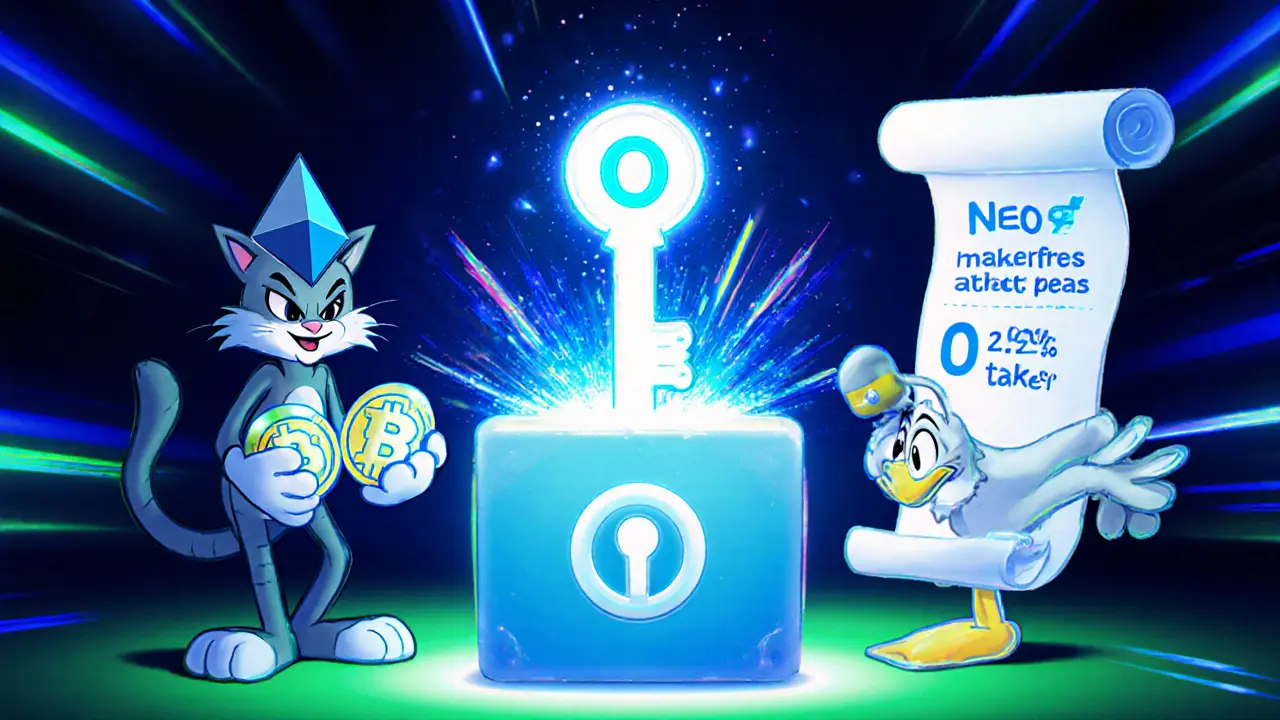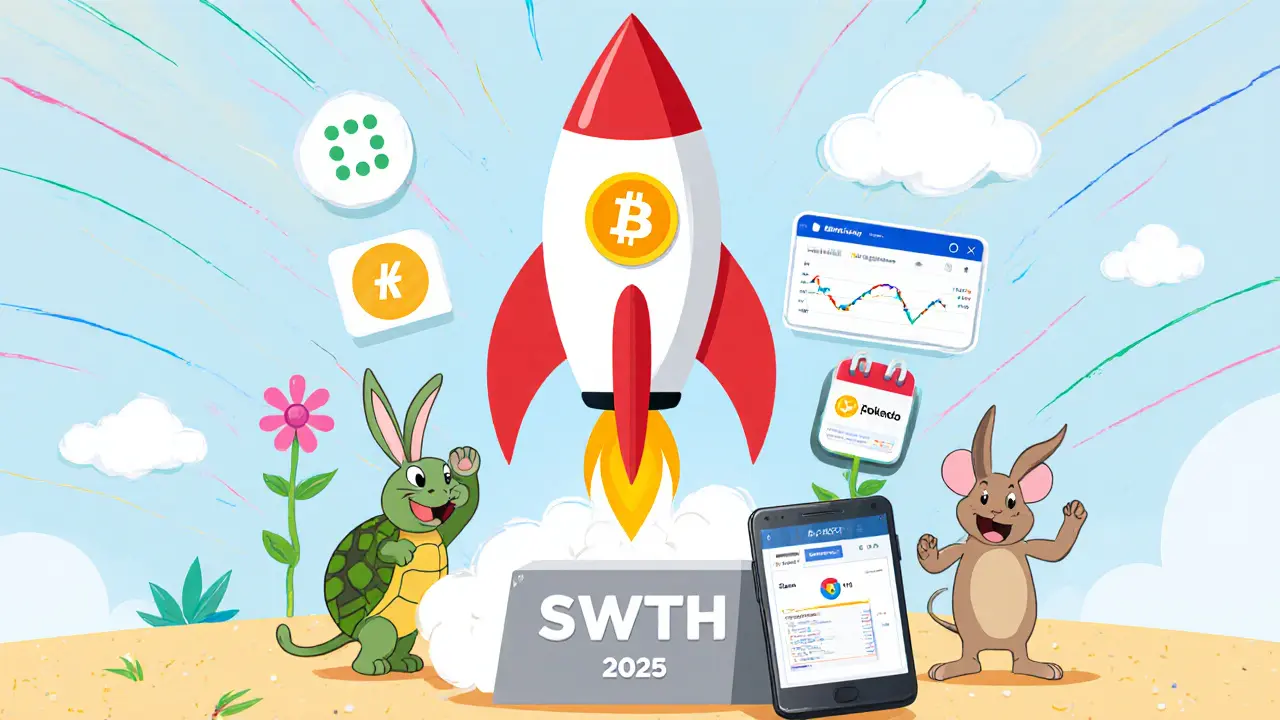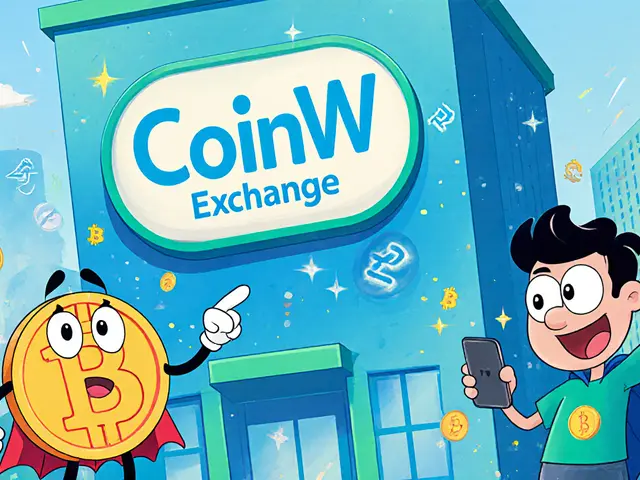
Switcheo Trading Fee Calculator
Fee Breakdown
Maker Fee
0%
Earn rewards for providing liquidity
Taker Fee
0.20%
Pay for removing liquidity
Withdrawal Fee
Network Only
No platform fees
About Switcheo's Fee Structure
Switcheo uses a transparent maker-taker model where makers (liquidity providers) pay 0% fees, while takers (order creators) pay 0.20% per trade. Unlike centralized exchanges, there are no hidden withdrawal fees - only blockchain network fees apply.
Looking for a crypto exchange that lets you trade without handing over your passport and avoids the usual withdrawal fees? Switcheo Network promises exactly that - a trust‑less platform that connects multiple blockchains while keeping your assets in your own wallet. This review breaks down how the exchange works, what you pay, where it shines, and where it falls short, so you can decide if it fits your trading style.
What is Switcheo Network?
Switcheo Network is a Singapore‑based decentralized cryptocurrency exchange (DEX) that launched on February 12, 2018. It bills itself as “The Preferred Exchange” for cross‑chain trading, meaning you can swap tokens from different blockchains without a middle‑man. The platform runs on its native utility token SWTH, which is used for governance and fee discounts.
Core Architecture and Multi‑Chain Support
Switcheo’s biggest technical claim is interoperability. At launch it tied together three major networks - NEO, Ethereum, and EOS. By supporting ERC‑20, NEP‑5 and EOS token standards, the exchange currently offers around 60 cross‑chain trading pairs, from NEO/GAS to popular ERC‑20 tokens like USDT.
Cross‑chain swaps happen through atomic swap contracts. An Atomic Swap is a trust‑less protocol that locks assets on both chains until a cryptographic secret is revealed, guaranteeing that either both sides trade or nothing happens. This eliminates the need for a centralized order‑book custodian.
How to Start Trading on Switcheo
- Acquire a compatible wallet (e.g., Neon, MetaMask, or Scatter) and fund it with the token you want to trade.
- Visit the Switcheo web app using Google Chrome in Incognito mode - the team recommends this to ensure you always load the latest code.
- Connect your wallet by approving the DApp connection prompt.
- Select a trading pair, set your price, and confirm the transaction in your wallet.
- Watch the on‑chain transaction confirm; once confirmed, the swap is complete.
Because there’s no custodial account, you never hand over private keys. The trade is recorded on the underlying blockchains, giving you full ownership of the result.
Fee Structure - What You Actually Pay
Switcheo uses a maker‑taker model that’s simple and transparent. Maker‑taker fee structure charges 0% for makers (those adding liquidity) and 0.20% for takers (those removing liquidity). There are no hidden withdrawal fees - you only cover the network fee that the blockchain itself requires (e.g., gas on Ethereum).
For comparison, many centralized exchanges add a 0.1%‑0.25% withdrawal surcharge on top of the blockchain fee, while other DEXs often apply a flat 0.3%‑0.5% on every trade. Switcheo’s zero‑maker fee is a distinct incentive for liquidity providers.

Security and Regulatory Credibility
Since it never holds user funds, the exchange sidesteps many of the hacks that plague custodial platforms. Switcheo has undergone multiple third‑party security audits, and its code is open‑source on GitHub, allowing anyone to verify contract logic.
Adding a layer of regulatory trust, Switcheo is certified by the Singapore FinTech Association. This certification signals that the platform meets Singapore’s fintech standards, a rare credential among DEX projects.
Pros and Cons - The Bottom Line
- Pros:
- No KYC - start trading instantly with a wallet.
- Zero maker fees encourage liquidity provision.
- Cross‑chain swaps eliminate the need for multiple exchanges.
- Only network fees are charged on withdrawals.
- Certified by a reputable fintech body.
- Cons:
- No fiat on‑ramps - you must already own crypto.
- Web‑only interface; no native mobile apps.
- Requires Chrome Incognito mode, which can feel odd.
- Trading volume is modest, leading to wider spreads on less‑liquid pairs.
- Development updates have slowed since the 2018 v2.0 release.
Feature Comparison
| Feature | Switcheo Network | Typical Centralized Exchange (e.g., Binance) | Popular DEX (e.g., Uniswap) |
|---|---|---|---|
| KYC Required | No | Yes | No |
| Fiat Deposits | None | Supported | None |
| Cross‑Chain Trading | Supported (NEO, ETH, EOS) | Limited (via wrapped tokens) | Ethereum‑only (ERC‑20) |
| Maker Fee | 0% | 0.1%‑0.2% | 0.3% |
| Taker Fee | 0.20% | 0.10%‑0.15% | 0.3% |
| Withdrawal Fees | Network fee only | Network + platform fee | Network fee only |
| Mobile App | No (web only) | Yes | Yes (via web wallet) |
| Regulatory Certification | Singapore FinTech Association | Varies by jurisdiction | None |
User Experience - What It Feels Like
The UI mirrors classic centralized exchanges: order books, trade history, and price charts are all present. For seasoned traders, the layout feels familiar, but newcomers must grapple with wallet‑connection steps and the Incognito requirement. Since the platform doesn’t store API keys, you won’t find “API trading” options - everything runs through your browser wallet.
One recurring user complaint is the lack of a native mobile app. While the responsive web page works on phones, the need to keep Chrome in Incognito can be annoying, especially if you’re switching between tabs. For heavy mobile traders, this may be a deal‑breaker.
Future Outlook - Where Is Switcheo Headed?
Switcheo’s early mover advantage in cross‑chain swaps still gives it relevance, especially as other DEXs explore layer‑2 solutions that are currently Ethereum‑centric. However, the platform’s activity has plateaued since the 2018 v2.0 upgrade, and there have been few public roadmap announcements in 2024‑2025.
Potential growth paths include:
- Integrating newer blockchains (e.g., Polkadot, Solana) to broaden the token catalogue.
- Launching a lightweight mobile web app or progressive web app to appease on‑the‑go traders.
- Introducing liquidity mining or staking incentives tied to the SWTH token to attract more market makers.
If Switcheo can deliver these upgrades while maintaining its security posture, it could claw back market share from high‑volume rivals. Otherwise, its niche will likely remain limited to privacy‑focused users who value true non‑custodial cross‑chain swaps.

Frequently Asked Questions
Do I need to verify my identity to trade on Switcheo?
No. Switcheo is a decentralized exchange, so it does not require any KYC or personal documents. You simply connect a compatible wallet and start swapping.
Can I deposit fiat currency directly into Switcheo?
No. The platform only accepts crypto deposits. You’ll need to acquire Bitcoin, Ethereum, or another supported token on a fiat‑on‑ramp exchange first.
What wallets are compatible with Switcheo?
Switcheo works with NEO wallets (e.g., Neon), Ethereum wallets (MetaMask, MyEtherWallet), and EOS wallets (Scatter). Choose the wallet that matches the blockchain of the token you want to trade.
How are fees calculated on Switcheo?
Switcheo uses a maker‑taker model: makers pay 0% and takers pay 0.20% per trade. Withdrawal costs are limited to the blockchain’s network fee; there are no extra platform fees.
Is Switcheo’s code audited?
Yes. Independent security firms have audited the smart contracts, and the code is open‑source on GitHub for public review.





